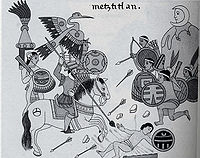
Photo from wikipedia
Bacteriophages (phages) are antimicrobials with resurgent interest that are being investigated for the treatment of antibiotic refractory infection, including for Pseudomonas aeruginosa (Pa) lung infection in cystic fibrosis (CF). In… Click to show full abstract
Bacteriophages (phages) are antimicrobials with resurgent interest that are being investigated for the treatment of antibiotic refractory infection, including for Pseudomonas aeruginosa (Pa) lung infection in cystic fibrosis (CF). In vitro work supports the use of this therapy in planktonic and biofilm culture models; however, consistent data are lacking for efficacy across different clinical Pa strains, culture models, and in combination with antibiotics in clinical use. We first examined the efficacy of a 4-phage cocktail as an adjunct to our CF centre’s first-line systemic combination antibiotic therapy (ceftazidime + tobramycin) for 16 different clinical Pa strains and then determined subinhibitory interactions for a subset of these strains with each antibiotic in planktonic and biofilm culture. When a 4-phage cocktail (4 × 108 PFU/mL) was added to a ceftazidime-tobramycin combination (ceftazidime 16 mg/mL + tobramycin 8 mg/mL), we observed a 1.7-fold and 1.3-fold reduction in biofilm biomass and cell viability, respectively. The four most antibiotic resistant strains in biofilm were very susceptible to phage treatment. When subinhibitory concentrations of antibiotics and phages were investigated, we observed additivity/synergy as well as antagonism/inhibition of effect that varied across the clinical strains and culture model. In general, more additivity was seen with the phage-ceftazidime combination than with phage-tobramycin, particularly in biofilm culture, where no instances of additivity were seen when phages were combined with tobramycin. The fact that different bacterial strains were susceptible to phage treatment when compared to standard antibiotics is promising and these results may be relevant to ongoing clinical trials exploring the use of phages, in particular in the selection of subjects for clinical trials.
Journal Title: Antibiotics
Year Published: 2023
Link to full text (if available)
Share on Social Media: Sign Up to like & get
recommendations!